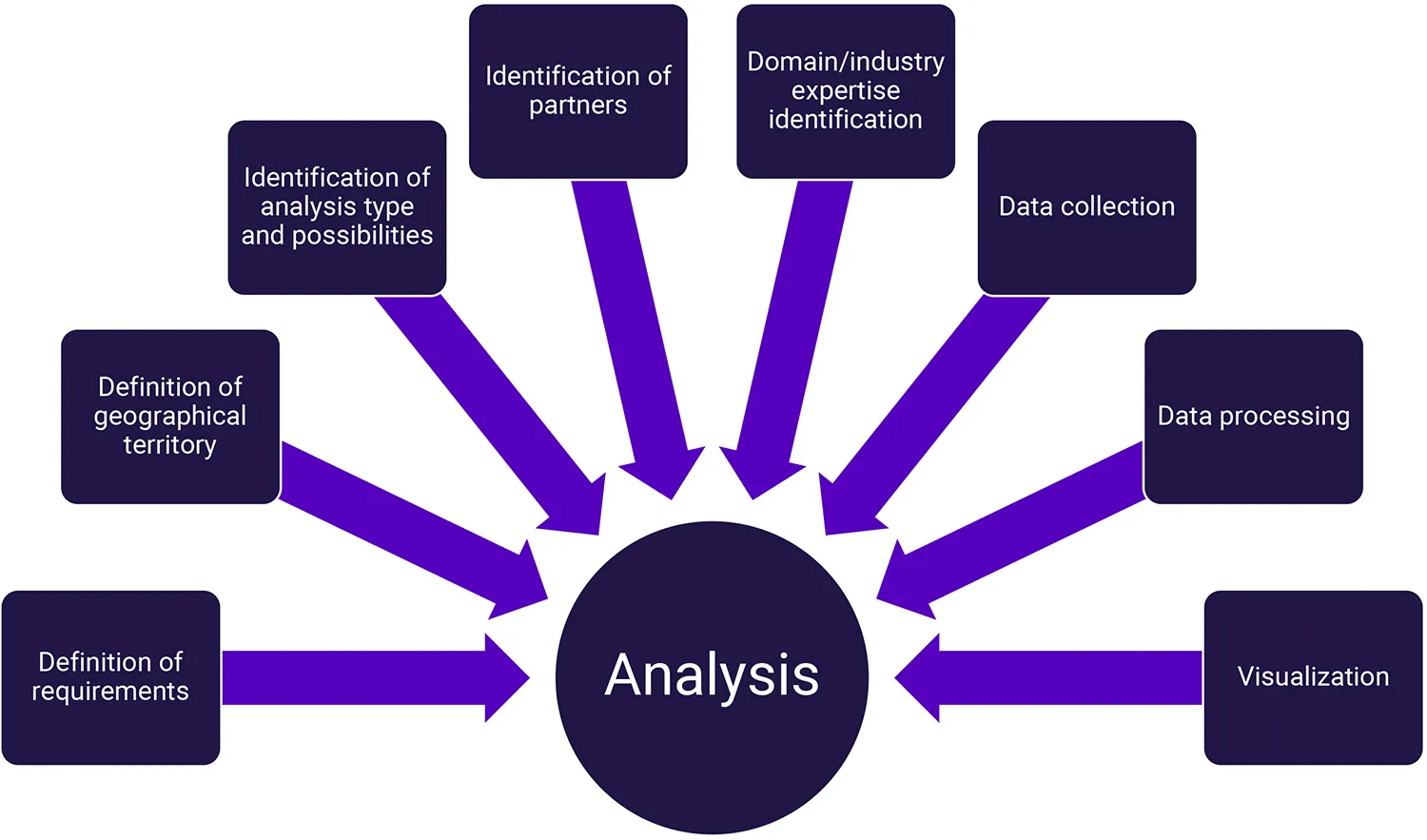
Advanced analytical technologies
Availability and analysis of information
Communication services are an indispensable part of our lives because they allow us to connect with other people and share information in any part of the world. Valuable data is available as a result of communication between the mobile terminal and the mobile network. Advances in data science, improvement in computer performance and in-depth knowledge of telecommunications enable the understanding, processing and creation of new knowledge from this data.
Ericsson Nikola Tesla, in cooperation with mobile network operators, uses anonymized data sets from telecommunications mobile networks. This means we can offer advanced space-time analytics that are:
- Comprehensive ► a single capture covers the whole area and a significant sample
- Reliable ► without the effect of subjective perception (surveys)
- Repeatable ► simple repetition of capturing enables an analysis of trends
- Adaptable ► in terms of geography and time, configuration according to needs
The structural integrity of analytics enables us to acquire information about important properties of our environment and phenomena, about their spatial and temporal distribution, shapes and sizes, as well as qualitative and intensity differences. Organizing, integrating and interpreting collected information is necessary for recognizing and evaluating events in our environment.
The integration of spatio-temporal analytics with demographic and other relevant data offers insight into the habits and needs of the population, which can be useful in marketing, research or investment activities. Analytical capabilities become even more important in a dynamic environment where data changes rapidly and ad hoc analyses become increasingly necessary. This is precisely why the integration of different data sources and the ability to perform analysis quickly and easily are becoming key features needed in today’s world.
Data comprehensiveness
Turning data into planning and management is important for achieving success in any business. Quality decisions can be made on the basis of quality information (structured data) and interpretation (understanding and knowledge as a consequence). Modern environmental data capturing technologies enable exactly that: successful resource management and business development.
Safe environment
Data security and privacy protection are guaranteed. This is of utmost importance in a world where information is becoming increasingly digital and subject to security and privacy threats.
Data comprehensiveness
One of the biggest challenges in data collection is that traditional established methodologies such as surveys or manual data collection in specific locations collect only a fraction of the available data. Because of this, scattered, outdated, unreliable or superficial data is often used. Without access to complete, up-to-date and accurate data, users of such analyses risk making decisions that are not based on relevant and objective information.
Thorough analysis and efficiency
Customized, tailor-made analysis also presents a challenge for users. It is complex, expensive and time-consuming if done using established methodologies.
The solution to these challenges lies in the use of analytics based on anonymized data from telecommunications mobile networks. In addition to all the advantages mentioned so far, they are also more efficient in terms of finance.
Wide application
Data analytics can be applied and brings a range of benefits to a variety of economic activities, including tourism, marketing, public sector, retail and transport.
Tourism
Marketing
Public sector
Retail
Transport
Application of advanced analytical technologies in various economic activities
- Tourism – understanding tourist behavior, identifying trends, understanding tourist preferences and planning tourism strategy. Attracting a larger number of tourists, increasing revenue and developing the tourism industry.
- Marketing – understanding consumers and market segmentation, better understanding of demand and supply and developing effective marketing strategies to attract consumers.
- Public sector – improving public services, understanding the needs of citizens and increasing the effectiveness of state, regional and local programs, making quality decisions based on facts.
- Retail – understanding customer needs, identifying sales trends and developing marketing strategies effective in attracting customers, improving offerings in line with market needs.
- Traffic – improving safety, reducing congestion and improving passenger experience, better planning and traffic management.
Analysis project flow
The implementation of the analysis project consists of several stages and includes the following:
- Definition of requirements – the analyst must understand why the analysis is being performed, what are the key needs and objectives that need to be met. This helps determine the exact scope of the analysis.
- Definition of geographical territory to be covered by the analysis. It can be a geographic area, population, industry or any other relevant segment.
- Identification of the type and possibilities of the analysis to be performed (e.g. statistical analysis, financial analysis, SWOT analysis) and identification of variables that will be used for that analysis.
- Identification of partners who will help carry out the analysis, such as internal experts, external experts and other relevant stakeholders.
- Identification of specialist knowledge from experts in different fields to ensure quality analysis. It may include experts in the fields of statistics, economy, technology and other.
- Collection of data necessary to carry out the analysis. It may include primary and secondary collection of data.
- Processing and analysis of data in order to achieve relevant results. It may involve the application of statistical methods, mathematical models or other techniques.
- Visualization of analysis results in the form of graphs, tables and other visual tools to make them easier to understand and present to others
